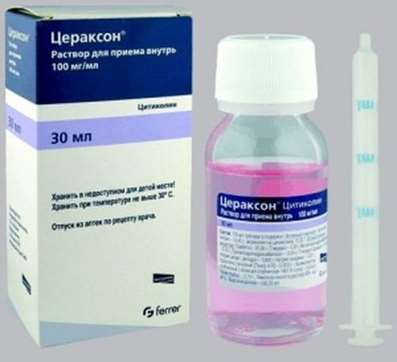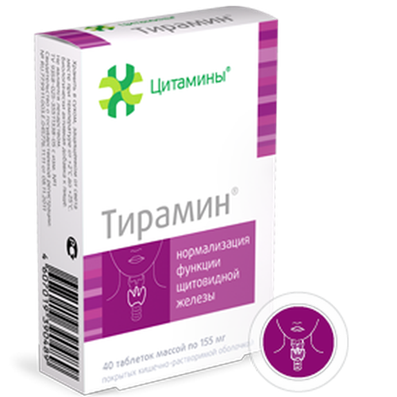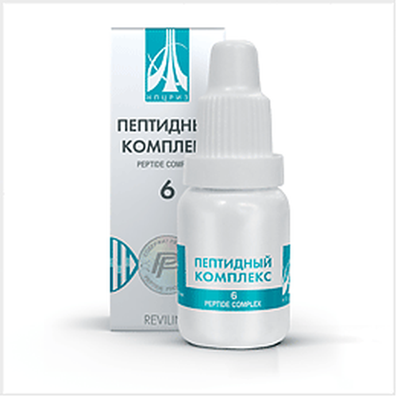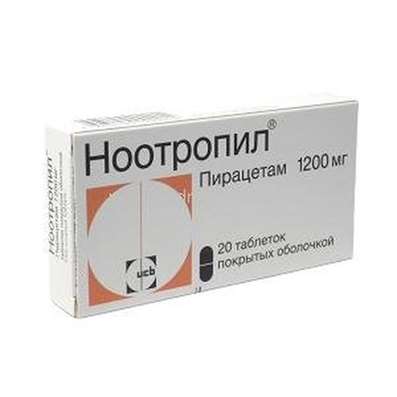Instruction for use: Heparin sodium
I want this, give me price
Trade name of the drug – Lyoton, Heparin, Trombleys, Lavenum, Thrombogel, Heparin-sodium Braun, Heparin sodium, Heparin-Richter, Heparin injection for 5000 units / ml, Heparin sodium, Heparin-Ferein, Heparin Sandoz, Viatromb, Thrombophobia, Tromblex® Plus, Heparin sodium salt, Heparin J, Heparin Lechiva, Heparin-Akrikhin 1000, Heparin
The Latin name of the substance Heparin sodium
Heparinum natrium (genus. Heparini natrii)
Chemical name
Mucopolysaccharide ester of polysulfuric acid
Pharmacological group:
Anticoagulants
The nosological classification (ICD-10)
D65 Disseminated intravascular coagulation [defibrillation syndrome]: DIC syndrome; Intravascular coagulation; Hyperfibrinolytic bleeding; Defibrillation Syndrome; Hyperfibrinolytic bleeding; Hyperfibrinolytic bleeding post-traumatic; Hypocoagulant phase of DIC syndrome; Convolation of intravascular disseminated; The syndrome of disseminated intravascular ; Defibrinization syndrome; Coagulopathies acquired
I21 Acute myocardial infarction: Myocardial infarction in the acute phase; Acute Myocardial Infarction; Myocardial infarction with pathologic Q wave and without; Myocardial infarction complicated by cardiogenic shock; Infarction left ventricular; Transmural myocardial infarction; Myocardial infarction netransmuralny (subendocardial); Netransmuralny myocardial infarction; Subendocardial myocardial infarction; The acute phase of myocardial infarction; Acute myocardial infarction;Sub-acute phase of myocardial infarction; Subacute phase of myocardial infarction; Thrombosis of the coronary arteries (the arteries); Threatened myocardial infarction; Myocardial infarction without Q wave
I74 Embolism and arterial thrombosis: Thrombosis of effort (stress); Arterial thrombosis; Arteriothrombosis; Subacute and chronic arterial thrombosis; Subacute thrombosis of peripheral arteries; Postoperative thrombosis; Vascular thrombosis; Vascular embolism; Thrombosis of aortocoronary shunt; Arterial thrombosis; Thrombosis of arteries; Coronary artery thrombosis; Coronary thrombosis; Thrombosis of blood vessels; Thrombosis with ischemic stroke; Thrombosis with general surgical operations; Thrombosis in Oncology Operations; Vascular thrombosis; Thrombus formation in the postoperative period; Thrombotic complications; Thromboembolic diseases; Thromboembolic syndrome; Thromboembolic complication in the postoperative period; Thromboembolism of arteries; Partial vascular thrombosis; Embolism; Embolism of arteries
I77.1 arteriostenosis: Occlusive arterial disease; Peripheral arterial occlusive disease;Peripheral arterial occlusive disease in stages III-IV on Fontaine
I80 Phlebitis and thrombophlebitis: Diseases of peripheral vessels; Inflammation of superficial veins; Inflammatory diseases of veins; Deep venous thrombophlebitis; The disease of veins; Disease of the veins of the lower extremities; Diseases of peripheral vessels; Migrating phlebitis; Insufficiency of veins of lower extremities; Exacerbation of chronic thrombophlebitis; Acute thrombophlebitis; Acute thrombophlebitis of superficial veins; Periphlebitis; Periflebit surface; Superficial inflammation of veins; Surface thrombophlebitis; Surface phlebitis; Thrombophlebitis; Deep vein thrombophlebitis; Thrombophlebitis superficial; Phlebitis; Phlebitis of deep veins; Phlebitis of superficial veins; Phlebopathy; Chronic thrombophlebitis; Endophlebitis
I82 Embolism and thrombosis of other veins: Recurrent venous thrombosis; Postoperative thrombosis; Venous thrombosis; Acute venous thromboembolism; Recurrent vein thrombosis; Venous thrombosis; Thrombosis of veins of internal organs; Venous thrombosis; Deep vein thrombosis; Thrombosis of blood vessels; Vascular thrombosis; Thrombosis of veins; Deep vein thrombosis; Thromboembolic diseases; Thromboembolism of veins; Severe venous thrombosis; Embolism; Embolism of veins; Thromboembolic complications
H83 Other internal ear disorders: Disturbance of inner ear function; Violation of the inner ear function of vascular genesis; Disturbances of blood supply to the inner ear; Functional disorder of the inner ear
M77.9 Other specified enterosopathy: Capsules; Periarthritis; Tendonitis; Tendopathy; Periarthropathy
T14.0 Superficial injury of unspecified area of the body: Abrasions; Scratch; Skin Wounds; Wounds of soft tissues; Hematoma; Hematoma of traumatic origin; Hematomas; Hematomas of muscles; Hematomas of soft tissues; Healing of the skin; Bruise; Bruising due to sprains and bruises; Microtrauma; External bruises; Small combing; Superficial hematoma; Superficial damage to the skin and mucous membranes; Subcutaneous hematoma; Post-traumatic hematoma; Post-traumatic disturbance of microcirculation; Skinness of the skin; Traumatic plexus lesions; Injury; Contusion of soft tissues; Joint bruise; Traumatic bruises; Traumatic injury; Primary treatment of surface contaminated wounds; Abrasion; Bruise
T14.9 Injury unspecified: Pain syndrome after trauma; Pain syndrome with injuries; Pain syndrome with injuries and after surgery; Pain in case of injury; Pain of a traumatic nature; Joint pain with injuries; Postoperative and post-traumatic pain; Pain in case of injury; Pain of traumatic origin; Severe pain syndrome of traumatic origin; Deep tissue damage; Deep scratches on the trunk; Closed injury; Minor Household Injuries; Minor skin damage; Violations of the integrity of soft tissues; Uncomplicated trauma; Extensive traumatic injury; Acute pain syndrome of traumatic origin; Edema with trauma; Postponed sports injuries; Post-traumatic pain; Soft tissue injuries; Joint wounds; Sports injuries; Injury; Traumatic pain; Traumatic pains; Traumatic infiltrate; Injuries to sports
Z100 * CLASS XXII Surgical practice: Abdominal surgery; adenomectomy; Amputation; Coronary angioplasty; Angioplasty of the carotid arteries; Antiseptic skin treatment for wounds; Antiseptic Hand; Appendectomy; atherectomy; Balloon coronary angioplasty; Vaginal hysterectomy; The coronary bypass; Interventions in the vagina and cervix; Interventions on the bladder; Intervention in the mouth; Restoration and reconstructive surgery; Hand hygiene of medical personnel; Gynecologic surgery; Gynecological intervention; Gynecological surgery; Hypovolemic shock during operations; Disinfection of purulent wounds; Disinfection of wounds edges; Diagnostic intervention; Diagnostic procedures; Cervical Diathermocoagulation; Long-surgery; Replacing the fistula catheters; Infection in orthopedic surgery; Artificial heart valve; cystectomy; Short-term outpatient surgery; Short-term operation; Short surgical procedures; Krikotireotomiya; Blood loss during surgery; Bleeding during surgery and in the postoperative period; Kuldotsentez; laser photocoagulation; laser coagulation; retinal laser coagulation; Laparoscopy; Laparoscopy in Gynecology; CSF fistula; Small gynecological operations; Small surgical procedures; Mastectomy and subsequent plastic; mediastinotomy; Microsurgical operations on the ear; Mukogingivalnye operation; suturing; Minor surgery; neurosurgical operation; Immobilization of the eyeball in ophthalmic surgery; testectomy; pancreatectomy; Perikardektomiya; The period of rehabilitation after surgery; The period of convalescence after surgery; Percutaneous transluminal coronary angioplasty; Pleural thoracentesis; Pneumonia postoperative and posttraumatic; Preparation for surgical procedures; Preparation for surgery; Preparation of the surgeon's hands before surgery; Preparation of the colon for surgical procedures; Postoperative aspiration pneumonia in neurosurgical and thoracic surgery; Postoperative nausea; Postoperative bleeding; postoperative granuloma; postoperative shock; The early postoperative period; myocardial revascularization; Radiectomy; gastric Resection; bowel resection; uterine Resection; liver Resection; enterectomy; Resection of part of the stomach; Reocclusion of the operated vessel; Bonding tissues during surgical procedures; Removal of sutures; Condition after eye surgery; Condition after surgery; Condition after surgery in the nasal cavity; Condition after gastrectomy; Status after resection of the small intestine; Condition after tonsillectomy; Condition after removal of the duodenum; Condition after phlebectomy; Vascular surgery; Splenectomy; Sterilization of surgical instruments; Sterilization of surgical instruments; sternotomy; Dental surgery; Dental intervention in periodontal tissues; strumectomy; Tonsillectomy; Thoracic surgery; Thoracic surgery; total gastrectomy; Transdermal intravascular coronary angioplasty; Transurethral resection; Turbinektomiya; Removal of a tooth; cataract surgery; Removal of cysts; tonsillectomy; Removal of fibroids; Removing the mobile primary teeth; Removing polyps; Removing broken tooth; Removal of the uterus body; Removal of sutures; Fistula likvoroprovodyaschih ways; Frontoetmoidogaymorotomiya; Surgical infection; Surgical treatment of chronic limb ulcers; Surgery; The surgery in the anal area; The surgery on the colon; Surgical practice; The surgical procedure; Surgical interventions; Surgery on the gastrointestinal tract; Surgical procedures on the urinary tract; Surgical procedures on the urinary system; Surgical intervention of the genitourinary system; Surgical procedures on the heart; Surgical manipulation; surgery; Surgery on the veins; Surgical intervention; Vascular surgery; Surgical treatment of thrombosis; Surgery; cholecystectomy; Partial gastric resection; hysterectomy; Percutaneous transluminal coronary angioplasty; Percutaneous transluminal angioplasty; Coronary artery bypass; tooth Extirpation; Extirpation of milk teeth; pulpectomy; pulsative cardiopulmonary bypass; tooth Extraction; teeth Extraction; cataract extraction; Electrocoagulation; endourological intervention; episiotomy; Etmoidotomiya; Complications after tooth extraction
CAS Code
9041-08-1
Characteristics of the substance Heparin sodium
Anticoagulant direct action.
Obtained from lungs of cattle or mucous membrane of small intestine of pigs. Heparin sodium is an amorphous powder from white to grayish brown, odorless, hygroscopic. Soluble in water and physiological saline, pH 1% aqueous solution 6-7.5. Almost nerastvorim in ethanol, acetone, benzene, chloroform, ether. The activity is determined by the biological method according to the ability to prolong the clotting time of the blood and is expressed in units of action.
Pharmacology
Mode of action - Anticoagulant.
It binds with antithrombin III, causes conformational changes in its molecule and accelerates the integration of antithrombin III with serine proteases of the coagulation system; As a result, thrombin is blocked, the enzymatic activity of activated factors IX, X, XI, XII, plasmin and kallikrein.
Binds thrombin; This reaction is of an electrostatic nature and depends to a large extent on the length of the heparin molecule; Only a small part of the heparin molecule has an affinity with ATIII, which basically provides its anticoagulant activity. Thrombin inhibition by antithrombin is a slow process; The formation of the heparin-ATIII complex is significantly accelerated by the direct binding of heparin with the gamma-aminolizyl moieties of the ATIII molecule and due to the interaction between thrombin (via serine) and the heparin-ATIII complex (via arginine); After completion of the braking reaction of thrombin, heparin is released from the heparin-ATIII complex and can be used again by the body, and the remaining complexes are removed by the endothelial system; Reduces the viscosity of blood, reduces the permeability of vessels, stimulated bradykinin, histamine and other endogenous factors, and thus prevents the development of stasis; On the surface of endothelial cells, special receptors for endogenous heparin analogues have been found; Heparin is able to sorb on the surface of membranes of the endothelium and blood cells, increasing their negative charge, which prevents adhesion and aggregation of platelets, erythrocytes, leukocytes; Heparin molecules, which have a low affinity with ATIII, cause inhibition of smooth muscle hyperplasia, incl. Due to inhibition of platelet adhesion with inhibition of the release of the growth factor of these cells, suppress the activation of lipoprotein lipase, thus preventing the development of atherosclerosis; Heparin binds some components of the complement system, reducing its activity, interferes with the cooperation of lymphocytes and the formation of immunoglobulins, binds histamine, serotonin - all this causes an antiallergic effect; Interacts with the surfactant, reducing its activity in the lungs; Has an effect on the endocrine system - suppresses excessive synthesis of aldosterone in the adrenal cortex, binds adrenaline, modulates the response of the ovaries to hormonal stimuli, increases the activity of parathyroid hormone; As a result of interaction with enzymes can increase the activity of tyrosine hydroxylase of the brain, pepsinogen, DNA polymerase and reduce the activity of myosin ATPase, pyruvate kinase, RNA polymerase, pepsin.
In patients with IHD (in combination with acetylsalicylic acid) reduces the risk of developing acute coronary thrombosis, myocardial infarction and sudden death. Reduces the frequency of recurrent myocardial infarction and mortality of patients with myocardial infarction. In high doses it is effective in embolism of pulmonary vessels and venous thrombosis, in small doses for the prevention of venous thromboembolism, incl. After surgical operations; With IV injection, blood clotting slows down almost immediately, with a / m - after 15-30 minutes, with p / k - after 40-60 minutes, after inhalation, the maximum effect - in a day; The duration of the anticoagulant effect is 4-5 hours, 6 hours, 8 hours, 1-2 weeks, respectively, and the therapeutic effect-preventing thrombosis-persists significantly longer. Deficiency of antithrombin III in plasma or in the place of thrombosis can limit the antithrombotic effect of heparin.
The highest bioavailability is noted with IV introduction; When n / to the introduction of bioavailability is low, Cmax in the plasma is achieved after 2-4 h; T1 / 2 from the plasma is 1-2 hours; In plasma is mainly in protein-related condition; Is intensively captured by endothelial cells and cells of a mononuclear-macrophage system, concentrated in the liver and spleen. With the inhalation route of administration, it is absorbed by alveolar macrophages, capillary endothelium, large blood and lymphatic vessels: these cells are the main place of heparin deposition, from which it is gradually released, maintaining a certain level in the plasma; Desulfurized under the influence of N-desulfamidase and platelet heparinase, which is involved in the metabolism of heparin at later stages; Desulfated molecules under the influence of kidney endoglycosidase are converted into low-molecular fragments. Excretion occurs through the kidneys in the form of metabolites, and only with the introduction of high doses can excretion in unchanged form. Do not pass through the placental barrier, not excreted into breast milk.
With external use, a small amount of heparin is absorbed from the surface of the skin into the systemic circulation. Cmax in the blood is noted 8 hours after the application.
ApplicationofsubstanceHeparinsodium
Parenteral: unstable angina, acute myocardial infarction; Thromboembolic complications in myocardial infarction, heart and blood vessel operations, pulmonary embolism (including peripheral veins), coronary artery thrombosis and cerebrovascular diseases, thrombophlebitis (prevention and treatment); DIC-syndrome, prevention and therapy of microthrombogenesis and microcirculation disorders; Deep vein thrombosis; Thrombosis of the renal veins; Hemolytic-uremic syndrome; Atrial fibrillation (including accompanied by embolization), mitral heart disease (prevention of thrombosis); Bacterial endocarditis; Glomerulonephritis; Lupus nephritis. Prophylaxis of blood coagulation during extracorporeal methods (extracorporeal circulation in heart surgery, hemosorption, hemodialysis, peritoneal dialysis, cytarapheresis), forced diuresis; Flushing of venous catheters.
External: migrating phlebitis (including chronic varicose veins and varicose ulcers), thrombophlebitis of superficial veins, local edema and aseptic infiltration, complications after surgical operations on veins, subcutaneous hematoma (including after phlebectomy), trauma, Bruises of joints, tendons, muscle tissue.
Contraindications
Hypersensitivity, bleeding or tendency to bleeding (thrombocytopenia, hypofibrinogenemia, hemophilia, impaired vascular permeability), gastric and duodenal ulcer, acute bacterial endocarditis, cerebral hemorrhage, postoperative period with interventions on the brain and spinal cord.
Restrictions
For external use: increased tendency to bleeding, thrombocytopenia.
Pregnancy and breast-feeding
During pregnancy and during breastfeeding is possible only on strict indications.
The action category for fetus by FDA is C.
Side effects of the substance Heparin sodium
Side effects of the substance Heparin sodium
System Effects
From the nervous system and sensory organs: dizziness, headache.
From the cardiovascular system and blood (hematopoiesis, hemostasis): thrombocytopenia (6% of patients) - early (2-4 days of treatment) and late (autoimmune), in rare cases with fatal outcome; Hemorrhagic complications - bleeding from the gastrointestinal tract or urinary tract, retroperitoneal hemorrhages in the ovaries, adrenal glands (with the development of acute adrenal insufficiency).
On the part of the digestive system: a decrease in appetite, nausea, vomiting, diarrhea, an increase in the level of transaminases in the blood.
Allergic reactions: skin hyperemia, drug fever, urticaria, rash, itching, bronchospasm, anaphylactoid reactions, anaphylactic shock.
Other: long-term use - alopecia, osteoporosis, calcification of soft tissues, inhibition of aldosterone synthesis; Injection reactions - irritation, hematoma, painfulness upon administration.
With external application: skin hyperemia, allergic reactions.
Interaction
The effectiveness of sodium heparin is enhanced by acetylsalicylic acid, dextran, phenylbutazone, ibuprofen, indomethacin, dipyridamole, hydroxychloroquine, warfarin, dicumarol - increases the risk of bleeding (with caution), cardiac glycosides, tetracyclines, nicotine, antihistamine drugs, Acid.
The combined use of sodium heparin (including in the form of a gel) with indirect anticoagulants can cause lengthening of the PV. The risk of bleeding increases when combined with diclofenac and ketorolac when administered parenterally (avoid combination, including heparin at low doses). Clopidogrel increases the risk of bleeding.
Routes of administration
SC (hypodermic), IV (intravenous), external.
Precautions for the substance Heparin sodium
Constant monitoring of clotting time is necessary; Cancellation must be done gradually.
For external use, do not apply to open wounds, mucous membranes. The gel is not prescribed simultaneously with NSAIDs, tetracyclines, antihistamine drugs.

 Cart
Cart





